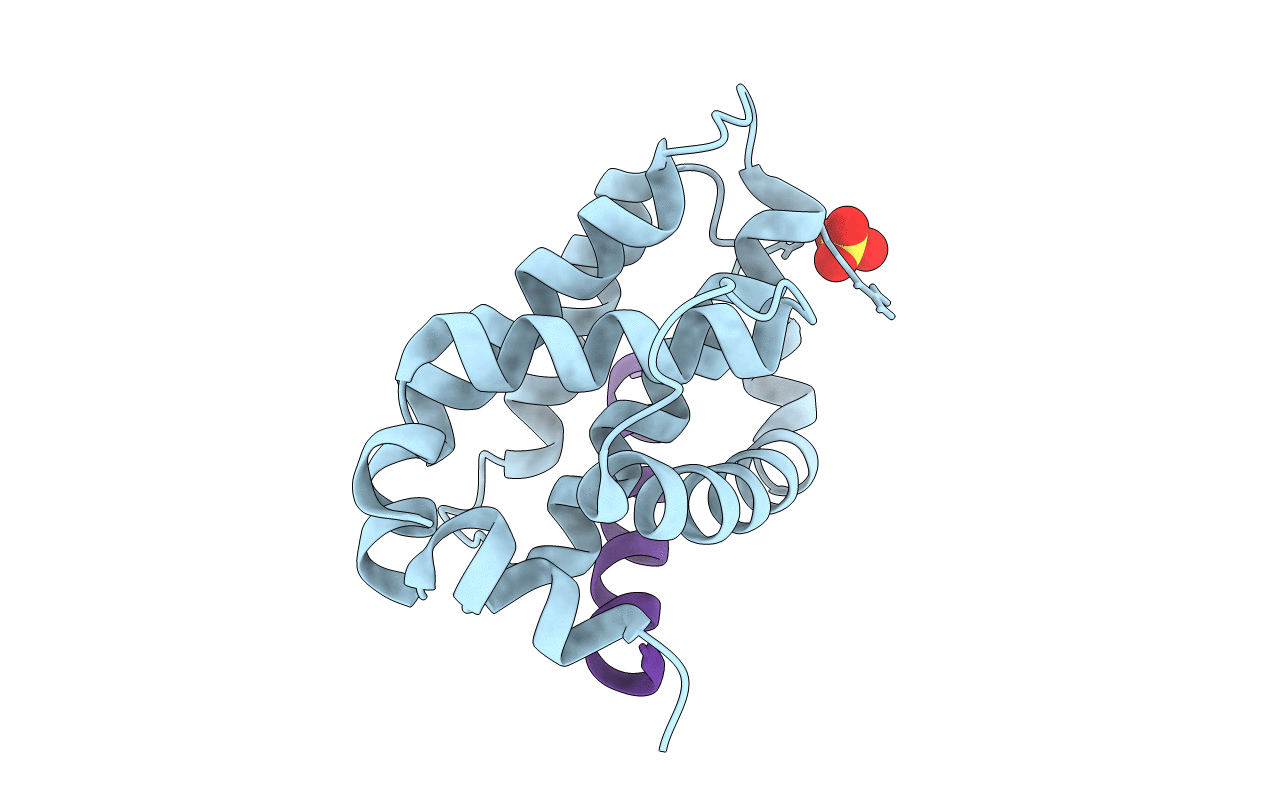
Deposition Date
2018-07-14
Release Date
2018-10-17
Last Version Date
2024-10-16
Entry Detail
PDB ID:
6E3J
Keywords:
Title:
Human Bfl-1 in complex with the Bfl-1-specific designed peptide srt.F10
Biological Source:
Source Organism:
Homo sapiens (Taxon ID: 9606)
synthetic construct (Taxon ID: 32630)
synthetic construct (Taxon ID: 32630)
Host Organism:
Method Details:
Experimental Method:
Resolution:
1.48 Å
R-Value Free:
0.17
R-Value Work:
0.14
R-Value Observed:
0.14
Space Group:
P 1 21 1


